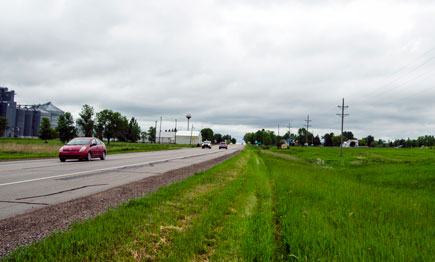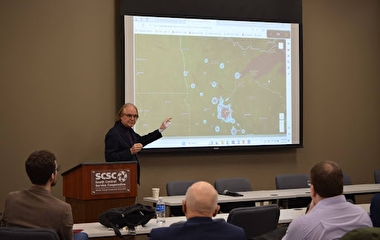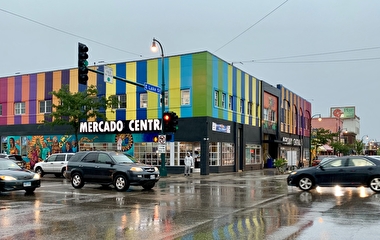Connected and automated vehicles (CAVs) offer tremendous potential for improving the lives of all Minnesotans, but a great deal of work is still needed to ensure that their potential safety, mobility, and equity benefits are realized.
To meet this need, researchers from across the U of M are already engaged in numerous projects focused on the challenges and possibilities of CAVs. In March, CTS convened many of these researchers, along with a sampling of transportation stakeholders, at the Automated Vehicle Researcher Symposium, an event designed to share information about this current work, identify pressing issues and research needs, and promote future cross-disciplinary collaborations that support CAV development in Minnesota.
Kicking off the event, more than a dozen U of M researchers from disciplines ranging from engineering to public policy to computer science gave brief overviews of their CAV-related work. Highlighted projects are investigating a wide variety of topics, including transportation policy and finance; engine, powertrain, and routing optimization; urban development; workforce education; freight; mobility, equity, and health; traffic management; deployments in rural areas; and sensors and other enabling technologies.
After hearing about this broad body of work, a panel of public agency and industry representatives discussed their organizations’ areas of interest and potential needs related to CAVs (see related article).
all Minnesotans, including those in rural areas.
Symposium attendees also had the chance to brainstorm their own ideas for future research. Breaking into several small groups, researchers and stakeholders focused their discussions on subcommittee topics from the Governor’s Advisory Council on CAVs: planning and land use; traffic regulations and safety; infrastructure; cybersecurity and data privacy; and economic development, business opportunity, and workforce.
These discussions generated a diverse list of potential topics for further investigation, including the future of parking facilities, ensuring equitable access to mobility as a service, potential implications for the Manual on Uniform Traffic Control Devices, smart city transportation management, the nature of work in a CAV world, and security vulnerabilities in transportation infrastructure.
“I hope symposium attendees were inspired by these discussions, had a chance to network with researchers from other disciplines, and gleaned some research ideas from our agency and industry participants,” says CTS director Laurie McGinnis. “I look forward to seeing the rich, exciting work that is sure to continue around connected and automated vehicles in Minnesota.”




